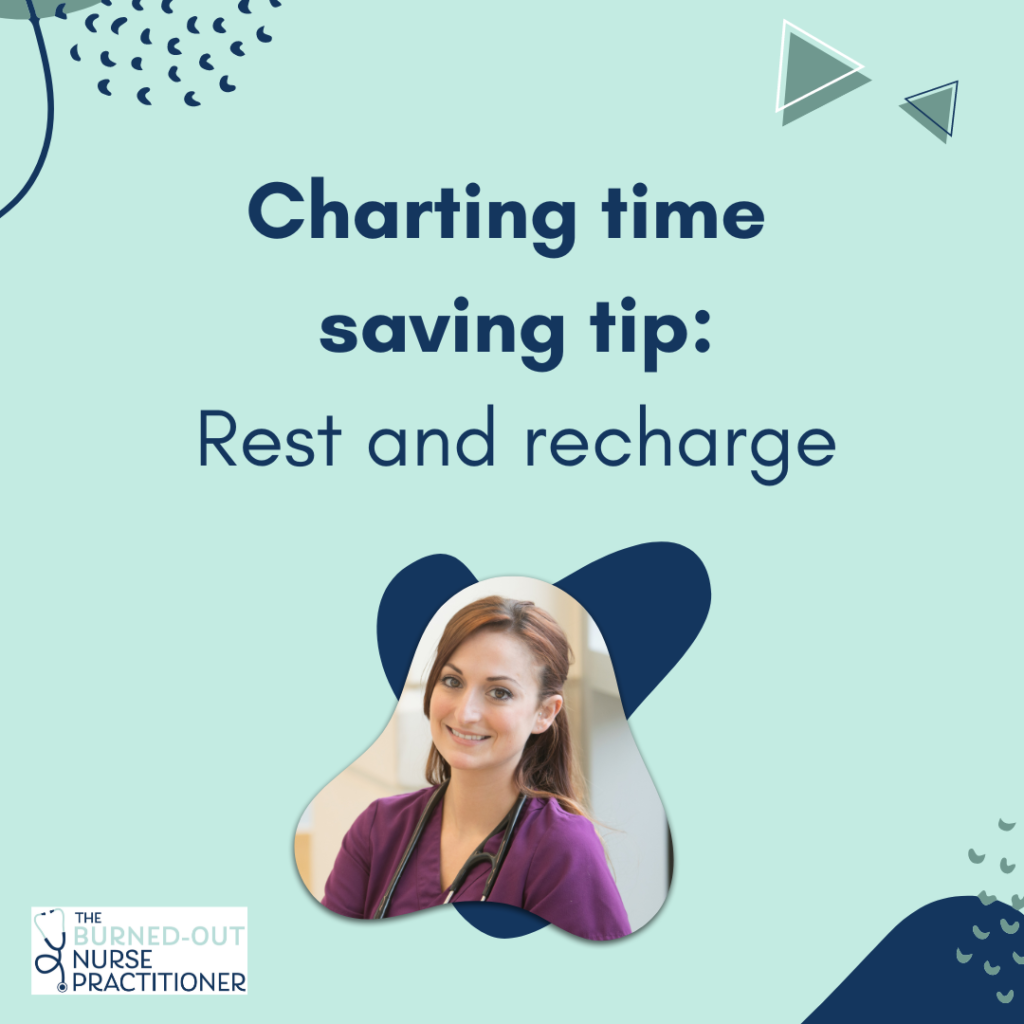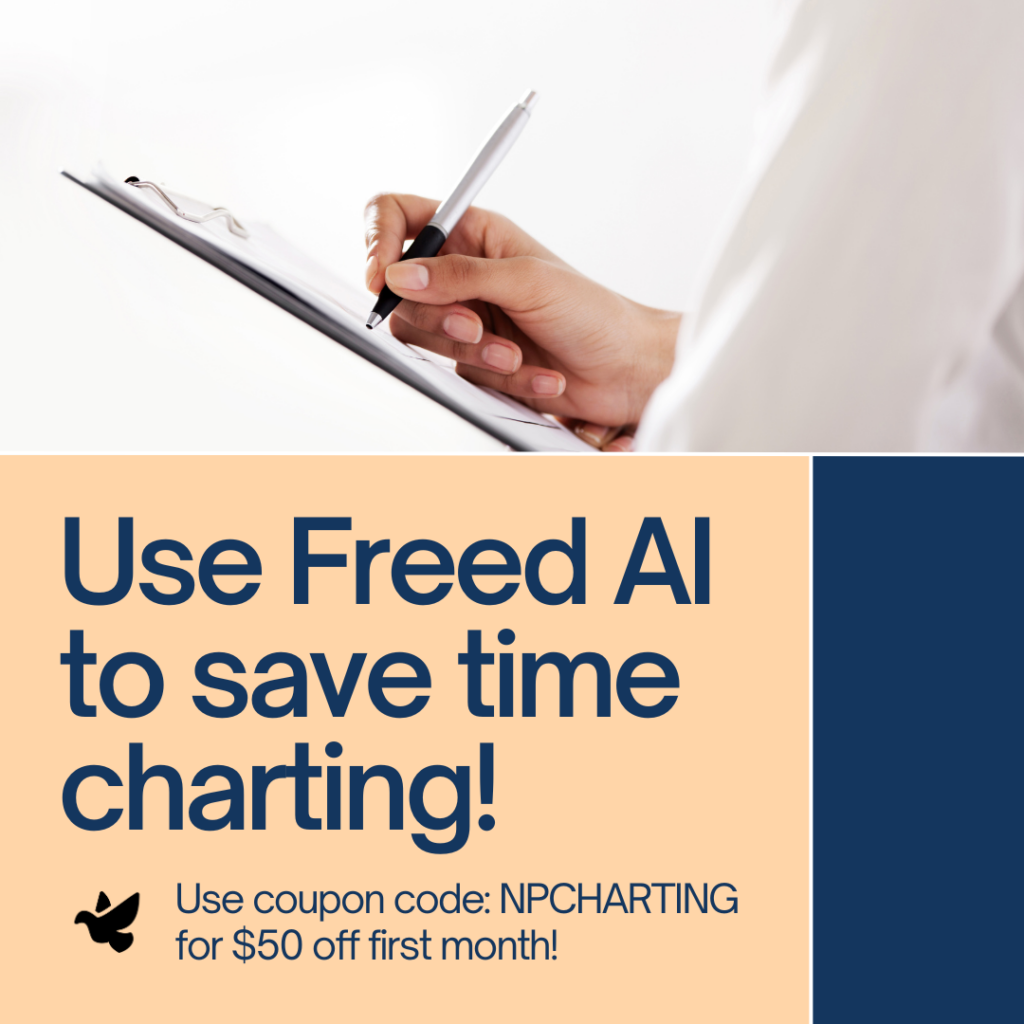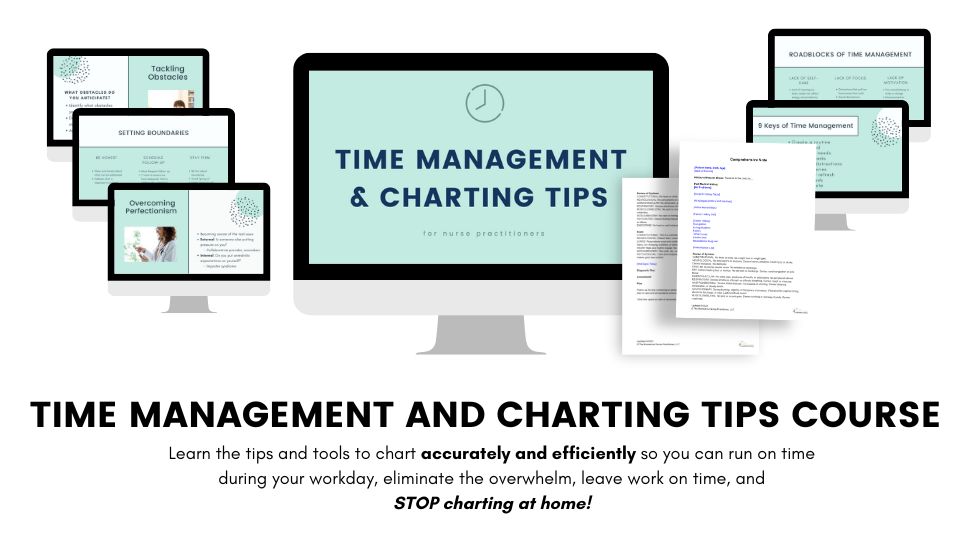Taking time to rest and recharge is important for our physical, mental, and emotional health. Implementing self-care should be a priority to help us manage stress and overwhelm. It is a great way to prevent or overcome nurse practitioner burnout.
**Also check out The Burned-out Nurse Practitioner’s article on 4 ways to rest in order to overcome nurse practitioner burnout.
The Nurse Practitioner Charting School also recommends rest and recharge to improve charting. We will take a look at some of the benefits and then some tips to increasing rest and relaxation.
Benefits of allowing time to rest and recharge:
Nurse practitioners should allow themselves time to rest and recharge! Here are some of the benefits listed below!
- Reduced stress. Resting and recharging can help reduce stress levels by allowing the body and mind to relax and recover from the demands of daily life. Chronic stress and overwhelm can lead to nurse practitioner burnout. So implementing stress reduction techniques can positively impact nurse practitioners.
- Improved productivity. Taking breaks and allowing time to recharge can actually improve productivity by increasing focus, creativity, and motivation. When our minds and bodies are rested, we can be more productive. And when we are more productive, we can get our work done at work so we can STOP charting at home!
- Improved mental clarity. Allowing time to rest and recharge to improve charting creates improved mental clarity. Nurse practitioners constantly intake/output information, make decisions, and multitask. This can create mental fatigue and brain fog. But allowing ourselves time to rest and recharging our brains can help us make better decisions.
- Better physical health. Resting and recharging can help the body recover from physical exertion and reduce the risk of injury or illness. This keeps us healthy as nurse practitioners!
- Enhanced mental health. Resting and recharging can improve mental health by reducing feelings of burnout, imposter syndrome, improving mood, and increasing overall well-being.
- Increased resilience. Taking time to rest and recharge to improve charting can increase resilience. This helps nurse practitioners better handle challenges, difficult patients, or a toxic work environment.
- Improved relationships. When nurse practitioners are well-rested and recharged, they are better equipped to communicate effectively and maintain positive relationships with others. This includes professional relationships at work or also personal relationships at home.
- Better work-life balance. When we are more productive at work, we are able to get more work done at work. Meaning there are less charts to finish at home. This allows us to create a better work-life balance and spend more time with our families. It also allows nurse practitioners more time to rest and recharge to improve charting.
Overall, taking time to rest and recharge to improve charting is essential for maintaining optimal physical and mental health, improving productivity, and enhancing overall well-being.
Tips to rest and recharge as a nurse practitioner
Improving your ability to rest and recharge requires a combination of mindset shifts and practical strategies. Here are some tips to help you create time to rest and recharge:
Prioritize rest.
There are only 24 hours in a day and to many nurse practitioners, it feels like there is not enough time. We cannot create more hours in the day, therefore we have to prioritize our time. Make rest a priority by scheduling it into your daily or weekly routine. Treat rest time as non-negotiable and as important as any other task or obligation. Work on prioritizing time to rest and recharge so you can be more productive.
Set boundaries.
Create clear boundaries around your time and energy, and learn to say no to commitments or requests that don’t align with your need for rest and recharge. Sometimes we need to set boundaries in our professional lives and other times with our personal relationships. Setting boundaries does not mean saying “no” all the time. But rather it creates a way we can better protect our time and energy so that we can say “yes” to what we want!
Learn time management and charting tips.
Through my work as The Burned-out Nurse Practitioner, I noticed that the #1 cause of burnout was a lack of work-life balance. And the #1 cause of poor work-life balance was charting!
That is why I created The Time Management and Charting Tips Course: to learn the tips and tools to chart accurately and efficiently so you can run on time during your workday, eliminate the overwhelm, leave work on time, and STOP charting at home!
When we improve our time management and charting, we then have more time to implement rest and relaxation.
Practice selfcare.
I cannot stress the importance of self-care enough! As nurse practitioners, our lives are incredibly busy with lots of stress and little time for ourselves. We must do activities to help us rest and recharge! Selfcare is so important for our mental, emotional, and physical health.
Chose activities that help you to rest and recharge. Whether that is a walk after work, a night out with friends, or binge watching movies on the couch, we need to do activities to help us relax. Mindfulness practices such as meditation, yoga, or deep breathing can help you to be present in the moment and reduce stress levels.
Disconnect from technology.
I don’t know about you, but I would benefit from this tip! I’ll admit, I am on my phone more than I would like to admit. I can literally access anything in my phone and have it on me at all times. (It doesn’t help when you take call as a nurse practitioner and HAVE to have a phone on you 🤪).
But unplugging from electronic devices and social media can help you to disconnect from distractions and create space for relaxation and rest. Not to mention the time saved! If you scroll through social media for 15 minutes over “lunch” that is the perfect amount of time to go for a quick walk! Disconnecting from technology can help you rest and recharge!
Get enough sleep.
Prioritize getting enough sleep by setting a consistent sleep schedule, creating a relaxing sleep environment, and avoiding electronics before bed. You know, the things we tell our patients to do, but are actually bad at doing ourselves 😉
Take breaks throughout the day.
Take regular breaks throughout the day to stretch, move, or simply take a few deep breaths. I like to go for a walk (even if it’s only 5 minutes) over my “lunch break.” I try to get outside and get some fresh air which helps me to rest and recharge. It is important to allow our minds the time and space to rest and recharge!
Remember that rest and recharge looks different for everyone, so find what works best for you and make it a priority. By prioritizing rest and incorporating these strategies into your daily routine, you can maximize your productivity, improve your physical and mental health, and enhance your overall well-being.
For more charting and time management tips, check out The Time Management and Charting Tips Course: to learn the tips and tools to chart accurately and efficiently so you can run on time during your workday, eliminate the overwhelm, leave work on time, and STOP charting at home!

Erica D the NP is a family nurse practitioner and The Nurse Practitioner Charting Coach. Erica helps nurse practitioners STOP charting at home! Erica created The Nurse Practitioner Charting School to be the one stop for all documentation resources created specifically for nurse practitioners. Learn more at www.npchartingschool.com
Follow on Facebook: The Nurse Practitioner Charting SchoolAnd on Instagram: @npchartingschool
Free training: 4 charting tips to help nurse practitioners get their time back! Sign up here!





